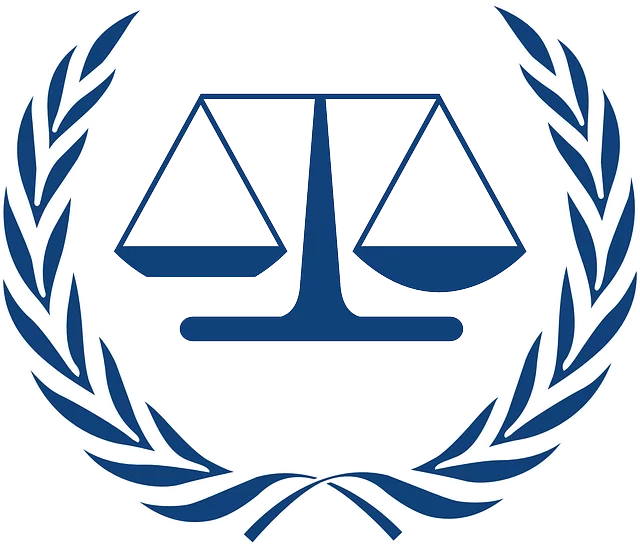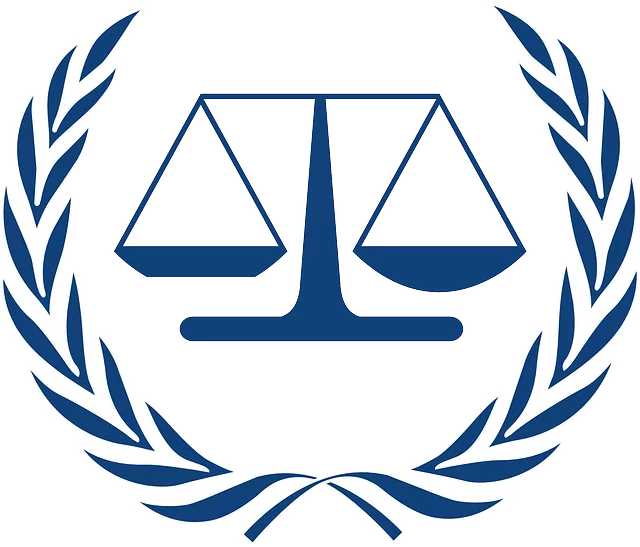Category: Aurora Medical Malpractice
Aurora Medical Malpractice: Navigating Patient Safety and Healthcare Accountability
Introduction
In the intricate web of healthcare delivery, ensuring patient safety and maintaining medical standards is paramount. Aurora Medical Malpractice refers to the legal and ethical considerations surrounding instances where healthcare providers fail to meet the required level of care, resulting in adverse outcomes for patients. This complex phenomenon is a critical aspect of healthcare governance, impacting not just individuals but also healthcare systems globally. This article aims to delve into the multifaceted world of Aurora medical malpractice, exploring its definition, global implications, economic dimensions, technological innovations, regulatory frameworks, challenges, and future prospects. By examining these aspects, we can gain valuable insights into how healthcare organizations can enhance patient safety and mitigate risks effectively.
Understanding Aurora Medical Malpractice: Unraveling the Concept
At its core, Aurora Medical Malpractice involves a breach of duty by a healthcare professional or institution, leading to harm or injury to a patient. This breach of duty can result from negligence, medical errors, inadequate training, or failure to adhere to established standards of care. The concept is rooted in the principle that healthcare providers have a legal and ethical obligation to deliver competent, skilled, and safe care to their patients.
Historically, medical malpractice cases have been driven by tort law, where patients can seek legal redress for injuries caused by medical negligence. Over time, as healthcare systems evolved, so did the regulatory landscape, leading to more stringent standards and oversight. Today, Aurora medical malpractice encompasses a wide range of issues, from diagnostic errors to surgical mistakes, medication errors, and inadequate informed consent.
Key Components:
- Breach of Duty: The fundamental element involves a deviation from the standard of care expected of healthcare professionals in similar circumstances.
- Causation: There must be a direct relationship between the healthcare provider’s actions (or inaction) and the patient’s harm.
- Damages: Patients must have suffered actual injuries or losses as a result of the medical malpractice.
Global Significance:
Aurora medical malpractice is a global concern, impacting healthcare delivery across countries. While legal systems and specific regulations vary, the underlying principles remain consistent. The World Health Organization (WHO) emphasizes patient safety as a core component of quality healthcare, highlighting the need for effective governance and accountability mechanisms. International organizations and collaborations play a crucial role in sharing best practices and standards to enhance patient safety worldwide.
Global Impact and Trends: A Worldwide Perspective
The influence of Aurora medical malpractice is evident on an international scale, with each region adopting unique approaches to address this complex issue.
Regional Variations:
- North America: Strict liability laws and robust patient advocacy groups have led to a robust legal framework for medical malpractice claims. The US, in particular, has seen significant investment in medical error prevention through technology and improved reporting systems.
- Europe: The European Union’s emphasis on patient rights and healthcare transparency has resulted in standardized guidelines for medical malpractice. However, the diverse healthcare systems across EU member states present challenges in harmonizing legal practices.
- Asia: Rapidly growing healthcare sectors in countries like China and India are witnessing increased awareness of medical malpractice. Regulatory bodies are implementing strict licensing and monitoring systems to improve patient safety.
- Middle East and Africa: These regions often face unique challenges, including limited healthcare infrastructure and resource constraints. However, there is a growing recognition of the need for robust medical malpractice regulations to attract foreign investment and enhance healthcare quality.
Key Global Trends:
- Increased Reporting and Transparency: Many countries are witnessing a rise in medical malpractice reporting rates, encouraging open dialogue and improved patient safety culture.
- Technology Integration: Electronic health records (EHRs) and data analytics are being utilized to identify patterns of medical errors, allowing for proactive risk mitigation.
- Patient Empowerment: Patients are becoming more engaged and informed about their healthcare choices, leading to higher expectations for safe and effective treatment.
Economic Considerations: The Financial Landscape of Medical Malpractice
Aurora medical malpractice has significant economic implications, affecting both healthcare providers and patients.
Market Dynamics:
- Legal Costs: Medical malpractice claims often result in lengthy legal battles, with substantial legal fees and settlement costs. Healthcare organizations may face substantial financial burdens, especially if found negligent.
- Insurance Premiums: Providers must secure professional liability insurance to cover potential malpractice claims. Premium rates are influenced by the organization’s risk profile, including its history of malpractice cases and patient safety measures.
Investment Patterns:
- Risk Mitigation Strategies: Healthcare providers invest heavily in training, technology, and quality improvement programs to reduce the likelihood of medical errors and subsequent malpractice claims.
- Healthcare Reform: Governments often implement healthcare reforms in response to high malpractice rates, aiming to streamline processes, improve patient safety, and control costs. These reforms can lead to significant changes in provider behavior and economic dynamics.
Economic Impact on Patients:
- Out-of-Pocket Expenses: In some cases, patients may face additional financial burdens due to medical malpractice, particularly if they pursue legal action. This can be especially challenging for individuals with limited resources.
- Access to Care: High malpractice insurance premiums might indirectly impact patient access to healthcare services, as providers may need to pass on these costs to patients or adjust their service offerings.
Technological Innovations: Enhancing Patient Safety
Technology plays a pivotal role in transforming the landscape of Aurora medical malpractice by improving patient safety and enabling more efficient risk management.
Data Analytics and Error Prevention:
- Electronic Health Records (EHRs): EHR systems offer comprehensive patient data, facilitating better decision-making and reducing errors associated with manual record-keeping.
- Predictive Modeling: Advanced analytics can identify patterns of medical errors, allowing healthcare organizations to implement targeted interventions and improve overall safety.
Communication and Coordination:
- Telehealth: Telemedicine platforms enable remote consultations, improving access to care and potentially reducing the risk of errors associated with in-person visits.
- Patient Monitoring Devices: Wearable devices and remote patient monitoring systems provide continuous data, enabling early detection of adverse events and timely interventions.
Artificial Intelligence (AI) and Machine Learning:
- Diagnostic Assistance: AI algorithms can assist healthcare professionals in interpreting complex medical images and data, reducing the risk of diagnostic errors.
- Predictive Analytics: Machine learning models can forecast patient risks, helping providers proactively manage vulnerable patients and prevent adverse outcomes.
Regulatory Frameworks: Governance and Accountability
Regulatory bodies play a critical role in establishing standards of care and ensuring accountability for Aurora medical malpractice.
International Standards:
- International Council on Medical Error Reduction (ICMER): This organization promotes global awareness and provides guidelines for reducing medical errors and improving patient safety.
- World Health Organization (WHO) Patient Safety Strategies: WHO offers a comprehensive framework for healthcare systems to enhance patient safety, including implementing quality improvement programs and promoting a culture of safety.
National Regulations:
- Licensing and Monitoring: Many countries have regulatory bodies that oversee the licensing and practice of healthcare professionals, conducting regular reviews and investigations.
- Malpractice Laws: Legal frameworks vary across nations, but they generally involve strict liability laws, cap on damages, or fault-based systems for determining liability in medical malpractice cases.
Quality Assurance Programs:
Healthcare organizations voluntarily participate in quality assurance programs to monitor and improve their performance. These programs often include peer review, performance audits, and continuous improvement initiatives.
Challenges and Overcoming Them: Navigating the Road Ahead
Despite significant progress in addressing Aurora medical malpractice, several challenges remain, requiring ongoing attention and innovation.
Common Hurdles:
- Complex Legal Landscape: The variability in legal systems and malpractice laws across countries creates complexities in harmonizing global standards.
- Underreporting: Medical errors often go unreported due to concerns about reputational damage or potential litigation. This underreporting hinders the identification of systemic issues and impedes improvement efforts.
- Resource Constraints: Limited resources, particularly in developing regions, can hinder the implementation of effective patient safety programs and technology adoption.
Strategies for Improvement:
- Global Collaboration: International organizations should foster collaboration to develop standardized guidelines and share best practices, ensuring consistent patient safety standards worldwide.
- Open Communication Culture: Healthcare organizations should encourage open dialogue about medical errors, promoting a culture where learning from mistakes is valued over fear of consequences.
- Invest in Technology and Training: Continuous investment in technology and staff training is essential to stay ahead of emerging risks and maintain high safety standards.
- Patient Engagement: Involving patients in their care and educating them about potential risks can empower them to make informed decisions and actively participate in improving patient safety.
Future Prospects: Shaping the Healthcare of Tomorrow
As technology advances and global healthcare systems evolve, the future of Aurora medical malpractice holds both opportunities and challenges.
Emerging Trends:
- Artificial Intelligence (AI) Integration: AI will likely play an even more significant role in predictive analytics, diagnostics, and patient monitoring, leading to improved safety and personalized care.
- Telehealth Expansion: Remote healthcare services are expected to grow, offering increased access but requiring new strategies for patient safety and consent.
- Genomic Medicine: The rise of genomic testing presents opportunities for precision medicine but also challenges in informed consent and potential discrimination.
Strategies for Future-Proofing Patient Safety:
- Adaptive Risk Management: Healthcare organizations should adopt adaptive risk management approaches, leveraging real-time data and advanced analytics to identify and mitigate emerging risks.
- Continuous Learning Culture: Encouraging a culture of continuous learning and improvement will be vital to staying abreast of new medical advancements and best practices.
- Global Patient Safety Initiatives: International collaborations should continue to develop and promote global patient safety standards, ensuring that healthcare systems worldwide meet consistent quality and safety benchmarks.
Conclusion: A Global Call to Action
Aurora medical malpractice is a complex yet critical aspect of healthcare governance that demands attention at local, national, and international levels. By understanding the global implications, economic dimensions, and technological advancements, healthcare organizations can proactively enhance patient safety and improve health outcomes. Through collaboration, innovation, and a commitment to continuous improvement, the future of healthcare can be shaped to ensure safer, more effective care for all.
Free Consult: Save Thousands with Top Aurora DUI Defense & Medical Malpractice Avoidance
Aurora Medical Malpractice Specialists: Get Thousands More with Our Free Consultation
Aurora Motorcycle Accident Lawyers: Free Consultation, Top Rates, Get Your Compensation Now!
Aurora’s Top Truck Accident Lawyers: Get Compensation, Avoid Costs

Are you seeking substantial compensation for an Aurora Medical Malpractice or truck accident? Our de…….
Stop Workplace Discrimination: Free Consultation, Justice, & Compensation – Aurora’s Top Lawyer

Are you facing unfair treatment or medical negligence in Aurora? Best Legal Aid, the top-rated emplo…….
Secure Custody Rights, Save on Legal Fees: Aurora’s Top Divorce Experts

Facing a divorce or custody battle in Aurora? Navigating complex family law issues can be overwhelmi…….
Aurora’s Premier Lawyer: Get Compensation, Save Thousands – Free Consultation
Save Money on Medical Malpractice Taxes: Aurora’s Expert Guide

Tired of the complex dance between Aurora Medical Malpractice disputes and overwhelming tax bills? I…….













